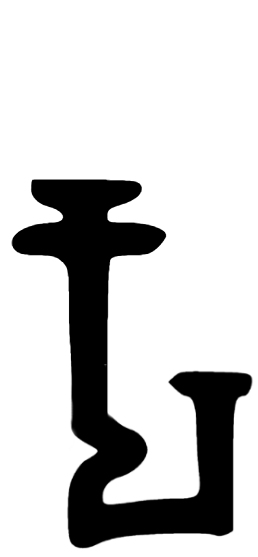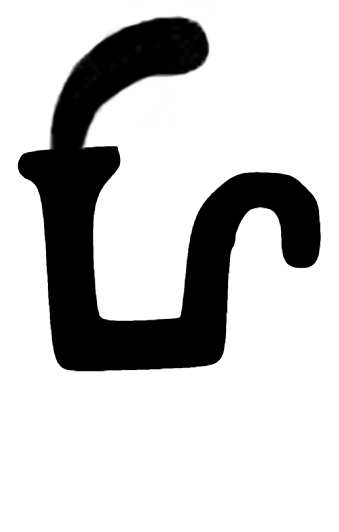|
Vanaspara
Vanaspara (ruled c. 130 CE) was an Indo-Arya or Scythian Northern Satrap (''kshtrapa''). He is mentioned as a "Satrap" (Brahmi:, ''Kṣatrapa'', "Satrap") of Kushan ruler Kanishka I on an inscription discovered in Sarnath, and dated to the 3rd year of Kanishka Kanishka I, also known as Kanishka the Great, was an emperor of the Kushan dynasty, under whose reign (–150 CE) the empire reached its zenith. He is famous for his military, political, and spiritual achievements. A descendant of Kujula Kadp ... (c. 130 CE), in which Kanishka mentions he was, together with "Great Satrap" Kharapallana, governor of the eastern parts of his Empire. The inscription was discovered on an early statue of a Boddhisattva, the Sarnath Bala Boddhisattva, now in the Sarnath Museum .Papers on the Date of Kaniṣka, Arthur Llewellyn Basham, Brill Archive, 1969, p.27/ref> References External linksDates of Kanishka and the Indo-Scythians {{authority control Northern Satraps 2nd-c ... [...More Info...] [...Related Items...] OR: [Wikipedia] [Google] [Baidu] |
Kharapallana
Kharapallana (Brahmi: , ; Greek: Ancient Greek: ) was an Indo-Scythian Northern Satrap who ruled around c. 130 CE. Name Kharapallana's name is attested in the Greek form () and in the Brahmi form , which are derived from the Saka name , meaning "splendid youth". Reign He is mentioned as a "Great Satrap" (Brahmi:, ''Mahakṣatrapa'', "Great Satrap") of Kushan ruler Kanishka I on an inscription discovered in Sarnath, and dated to the 3rd year of Kanishka (c. 130 CE), in which Kanishka mentions he was, together with Satrap Vanaspara, governor of the eastern parts of his Empire. The inscription was discovered on an early statue of a Boddhisattva, the Sarnath Bala Boddhisattva, now in the Sarnath Museum . Vanaspara and Kharapallana were ruling for Kanishka over the eastern provinces of the Empire, including the Benares Varanasi (, also Benares, Banaras ) or Kashi, is a city on the Ganges, Ganges river in North India, northern India that has a central place in th ... [...More Info...] [...Related Items...] OR: [Wikipedia] [Google] [Baidu] |
Northern Satraps
The Northern Satraps (Brahmi: , ''Kṣatrapa'', "Satraps" or , ''Mahakṣatrapa'', "Great Satraps"), or sometimes Satraps of Mathura, or Northern Sakas, are a dynasty of Indo-Scythian ("Saka") rulers who held sway over the area of Punjab and Mathura after the decline of the Indo-Greeks, from the end of the 1st century BCE to the 2nd century CE. They are called "Northern Satraps" in modern historiography to differentiate them from the " Western Satraps", who ruled in Sindh, Gujarat and Malwa at roughly the same time and until the 4th century CE. They are thought to have replaced the last of the Indo-Greek kings in the Punjab region, as well as the Mitra dynasty and the Datta dynasty of local Indian rulers in Mathura. The Northern Satraps were probably displaced by, or became vassals of, the Kushans from the time of Vima Kadphises, who is known to have ruled in Mathura in 90–100 CE, and they are known to have acted as Satraps and Great Satraps in the Mathura region for his su ... [...More Info...] [...Related Items...] OR: [Wikipedia] [Google] [Baidu] |
Sarnath Bala Boddhisattva
The ''Bala Bodhisattva'' is an ancient Indian statue of a bodhisattva, found in 1904–1905 by German archaeologist F.O. Oertel (1862–1942) in Sarnath, India. The statue has been decisive in matching the reign of Kanishka with contemporary sculptural style, especially the type of similar sculptures from Mathura, as it bears a dated inscription in his name.Papers on the Date of Kaniṣka, Arthur Llewellyn Basham, Brill Archive, 1969, p.27/ref> This statue is in all probability a product of the art of Mathura, which was then transported to the Ganges region. Iconography The Bala Bodhisattva, though found in Sarnath, reflects the stylistic and iconographic features of the Mathura region. Mathura school sculptures have common iconographic features with Kushan counterparts, but they show independent evolution due to purely Indic stylistic heritage. The use of characteristic red sandstone also indicates that the image belonged to Mathura school. The inscriptions on both the stat ... [...More Info...] [...Related Items...] OR: [Wikipedia] [Google] [Baidu] |
Indo-Scythian
The Indo-Scythians, also known as Indo-Sakas, were a group of nomadic people of Iranian peoples, Iranic Scythians, Scythian origin who migrated from Central Asia southward into the present-day regions of Afghanistan, Eastern Iran and the northwestern Indian subcontinent: present-day Pakistan and northern India. The migrations persisted from the middle of the second century BCE to the fourth century CE. The first Saka king in Greater India, India was Maues, Maues/Moga (first century BCE) who established Saka power in Gandhara, the Indus Valley, and other regions. The Indo-Scythians extended their supremacy over the north-western subcontinent, conquering the Indo-Greeks and other local peoples. They were apparently subjugated by the Kushan Empire's Kujula Kadphises or Kanishka. The Saka continued to govern as satrapies, forming the Northern Satraps and Western Satraps. The power of the Saka rulers began to decline during the 2nd century CE after the Indo-Scythians were defeated by ... [...More Info...] [...Related Items...] OR: [Wikipedia] [Google] [Baidu] |
Satrap
A satrap () was a governor of the provinces of the ancient Median kingdom, Median and Achaemenid Empire, Persian (Achaemenid) Empires and in several of their successors, such as in the Sasanian Empire and the Hellenistic period, Hellenistic empires. A satrapy is the territory governed by a satrap. A satrap served as a viceroy to the king, though with considerable autonomy. The word came to suggest tyranny or ostentatious splendour, and its modern usage is a pejorative and refers to any subordinate or local ruler, usually with unfavourable connotations of corruption. Etymology The word is derived via Latin from Ancient Greek, Greek (), itself borrowed from an Old Iranian languages, Old Iranian . In Old Persian, which was the native language of the Achaemenids, it is recorded as (, literally "protector of the province"). The Median language, Median form is reconstructed as . Its Sanskrit cognate is (). The Biblical Hebrew form is , as found in Esther 3:12. In the Parthian l ... [...More Info...] [...Related Items...] OR: [Wikipedia] [Google] [Baidu] |
Boddhisattva
In Buddhism, a bodhisattva is a person who has attained, or is striving towards, ''bodhi'' ('awakening', 'enlightenment') or Buddhahood. Often, the term specifically refers to a person who forgoes or delays personal nirvana or ''bodhi'' in order to compassionately help other individuals reach Buddhahood. In the Early Buddhist schools, as well as modern Theravāda Buddhism, bodhisattva (or bodhisatta) refers to someone who has made a resolution to become a Buddha and has also received a confirmation or prediction from a living Buddha that this will come to pass. In Theravāda Buddhism, the bodhisattva is mainly seen as an exceptional and rare individual. Only a few select individuals are ultimately able to become bodhisattvas, such as Maitreya. In Mahāyāna Buddhism, a bodhisattva refers to anyone who has generated ''bodhicitta'', a spontaneous wish and compassionate mind to attain Buddhahood for the benefit of all sentient beings. Mahayana bodhisattvas are spiritually heroic ... [...More Info...] [...Related Items...] OR: [Wikipedia] [Google] [Baidu] |
Kanishka I
Kanishka I, also known as Kanishka the Great, was an emperor of the Kushan dynasty, under whose reign (–150 CE) the empire reached its zenith. He is famous for his military, political, and spiritual achievements. A descendant of Kujula Kadphises, founder of the Kushan Empire, Kushan empire, Kanishka came to rule an empire extending from Central Asia and Gandhara to Pataliputra on the Gangetic plain. The main capital of his empire was located at history of Peshawar, ''Puruṣapura'' (Peshawar) in Gandhara, with another major capital at Mathura. Coins of Kanishka were found in Tripuri (present-day Jabalpur). Although he never converted to the religion, his conquests and patronage of Buddhism played an important role in the development of the Silk Road, and in the Silk Road transmission of Buddhism, transmission of Mahayana Buddhism from Gandhara across the Karakoram range to China. Around 127 CE, he replaced Koine Greek, Greek with Bactrian language, Bactrian as the official l ... [...More Info...] [...Related Items...] OR: [Wikipedia] [Google] [Baidu] |
Kushan Empire
The Kushan Empire (– CE) was a Syncretism, syncretic empire formed by the Yuezhi in the Bactrian territories in the early 1st century. It spread to encompass much of what is now Afghanistan, Eastern Iran, India, Pakistan, Tajikistan and Uzbekistan. Kushan territory in India went at least as far as Saketa and Sarnath, now near Varanasi district, Varanasi in Uttar Pradesh, where inscriptions have been found dating to the era of the Kushan emperor Kanishka the Great. The Kushans were most probably one of five branches of the Yuezhi confederation, an Proto-Indo-Europeans, Indo-European nomadic people of possible Tocharians, Tocharian origin, who migrated from northwestern China (Xinjiang and Gansu) and settled in ancient Bactria. The founder of the dynasty, Kujula Kadphises, followed Iranian and Greek cultural ideas and iconography after the Greco-Bactrian tradition and was a follower of the Shaivism, Shaivite sect of Hinduism. Two later Kushan kings, Vima Kadphises and Vasudeva ... [...More Info...] [...Related Items...] OR: [Wikipedia] [Google] [Baidu] |
Gupta Ashoka Kss
Gupta () is a common surname of Indian origin, meaning "guardian" or "protector". Origins and distribution The name is based on the Sanskrit word गोप्तृ ''goptṛ'', which means "guardian" or "protector". According to historian R. C. Majumdar, the surname ''Gupta'' was adopted by several different communities in northern and eastern India at different times. The Rāmpāl plate of the Chandra dynasty ruler Srichandra mentions a line of Brahmins who had Gupta as their surname. In Bengal region, the surname is found among Baidyas (mainly) as well as Kayasthas. According to Tej Ram Sharma, the name '' Sri Gupta'', "Sri" serves as an honorific title, similar to its usage for other Gupta emperors mentioned in inscriptions. If the first ruler's name had indeed been ''Sri Gupta'', it would likely have been recorded as ''Sri Sri Gupta'', as seen in the Deo-Barnark inscription of Jivitagupta II, where the name ''Srimati'' appears in a similar format. Therefore, if ''Gu ... [...More Info...] [...Related Items...] OR: [Wikipedia] [Google] [Baidu] |






